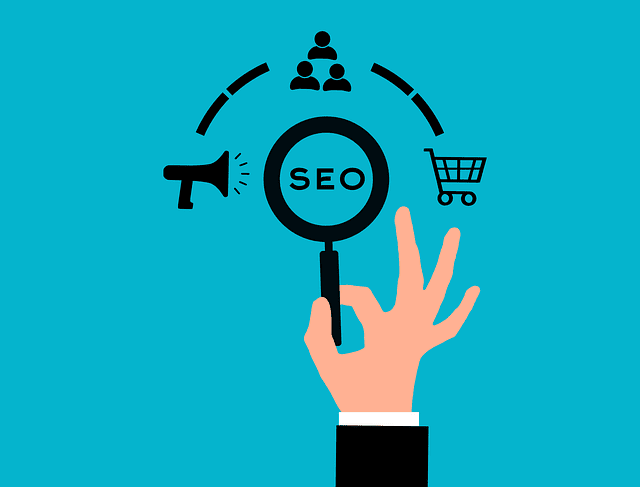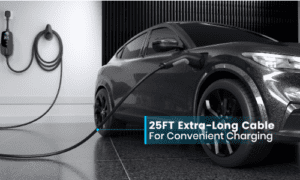If you want to drive more traffic to your online store, mastering ecommerce SEO is your best long-term strategy. In 2025, simply having a website isn’t enough—your store must be optimized to rank higher, load faster, and deliver a seamless shopping experience. Ecommerce SEO isn’t just about adding keywords or tweaking product titles; it’s a complete framework for building visibility, authority, and trust in an increasingly competitive digital world.
The truth is, customers don’t scroll past the first page of Google. If your store isn’t there, it might as well be invisible. But with the right ecommerce SEO strategies, you can attract high-intent shoppers who are actively looking for what you sell. Let’s explore ten proven techniques that can help your business rise above the competition in 2025.
What Is Ecommerce SEO and Why Does It Matter?
Ecommerce SEO is the process of optimizing your online store to appear prominently in search results for product-related keywords. It helps your store gain organic visibility without relying on paid ads. From product descriptions to technical site health, every element contributes to how Google and your potential customers perceive your brand.
When done correctly, ecommerce SEO brings a consistent flow of qualified visitors—people who are ready to buy. Instead of chasing trends or burning money on ads, you build a foundation of organic traffic that grows over time. Think of it as a digital investment that pays dividends long after the initial effort.
Strategy 1: Master Keyword Research with Buyer Intent
The cornerstone of ecommerce SEO is keyword research. But not all keywords are created equal. You must distinguish between informational, navigational, and transactional search intent. For example, someone searching “best running shoes for flat feet” wants advice, while someone typing “buy Nike Air Zoom Pegasus online” is ready to purchase.
Focus on keywords with clear buying intent while also targeting broader informational phrases through blog content. Tools like Ahrefs, SEMrush, or Google Keyword Planner can reveal hidden gems with moderate competition and high conversion potential. The goal isn’t just to rank—it’s to rank for the right searches.
Strategy 2: Optimize Product Pages Like Landing Pages
Every product page should act like a conversion-focused landing page. Start with a keyword-rich product title that’s clear and descriptive. Write unique product descriptions that highlight benefits rather than repeating manufacturer text. Include multiple product images, alt text, and schema markup to help Google understand your content.
Use concise meta titles and meta descriptions that encourage clicks. Think of these as your ad copy for organic search—they should be compelling enough to make a user stop scrolling and click your link.
Strategy 3: Strengthen Your Site Structure for SEO Success
A clean site structure helps both users and search engines navigate your store easily. Use logical categories and subcategories to organize your products. If customers can find what they need in two or three clicks, you’ve done it right.
Internal linking between related products or guides enhances user experience and distributes authority throughout your site. For instance, linking a blog post about “Best Gaming Laptops in 2025” to your “Laptop Accessories” category keeps users engaged while signaling relevance to Google.
Strategy 4: Prioritize Mobile Optimization and Site Speed
In 2025, mobile-first design isn’t optional—it’s a necessity. Most ecommerce traffic now comes from mobile devices, and Google ranks mobile-friendly sites higher. Make sure your layout is responsive, buttons are easy to tap, and checkout is smooth on every screen size.
Speed also matters. A slow site leads to high bounce rates and lost sales. Compress images, enable caching, and remove unnecessary plugins. Every second shaved off your load time improves both rankings and conversions.
Strategy 5: Craft Valuable Content That Educates and Converts
Blogging might not seem crucial for ecommerce, but it’s a game-changer. High-quality, educational content builds trust and brings in new visitors. Write detailed guides, product comparisons, and how-to articles that naturally feature your target keywords.
For example, a post titled “How to Choose the Right Coffee Maker for Home Use” can attract readers at the research stage. Once they trust your advice, they’re more likely to explore your products. Consistency is key—publish regularly to show both users and Google that your site is active and authoritative.
Strategy 6: Leverage User-Generated Content for SEO Growth
User-generated content, such as reviews and testimonials, adds authenticity and improves SEO. Each review provides fresh content that search engines love. It also increases engagement and builds trust with potential buyers.
Encourage customers to share their experiences through follow-up emails or small incentives. Authentic voices carry more weight than brand claims. In the eyes of Google and shoppers alike, active engagement signals a healthy and trustworthy store.
Strategy 7: Implement Schema Markup for Better Visibility
Schema markup helps search engines understand your pages better and display rich results—like star ratings, prices, and stock availability—directly in search results. These details increase click-through rates and attract buyers who are ready to purchase.
By implementing structured data correctly, your listings stand out visually, drawing attention even in crowded search pages. It’s a small technical step with a big payoff.
Strategy 8: Build Authority with Quality Backlinks
Backlinks remain one of the strongest ranking factors in ecommerce SEO. They signal trust and authority. Focus on earning links from reputable websites in your niche rather than chasing large numbers of low-quality links.
You can earn backlinks through guest posts, partnerships, and original research. Collaborate with industry influencers or create resources that others naturally want to cite. Over time, these links act as votes of confidence, boosting your domain authority and search visibility.
Strategy 9: Use Analytics to Refine Your SEO Approach
Data is your compass in ecommerce SEO. Tools like Google Analytics and Search Console show how visitors find your site, which pages perform best, and where users drop off. Use these insights to refine your content, fix weak spots, and double down on what works.
SEO isn’t a one-time task—it’s an ongoing process of testing and improving. Regular analysis ensures you stay aligned with search trends and user behavior.
Strategy 10: Focus on E-E-A-T to Build Lasting Trust
In 2025, Google’s E-E-A-T framework—Experience, Expertise, Authoritativeness, and Trustworthiness—is at the heart of SEO success. Your content should demonstrate real-world knowledge, come from credible sources, and provide genuine value.
Share personal insights, cite reliable data, and write with a tone of authenticity. Avoid fluff or overly promotional language. Building trust takes time, but it pays off with loyal customers and higher rankings.
Conclusion: Be the Authority Lighthouse in Your Market
Mastering ecommerce SEO in 2025 isn’t about chasing algorithms—it’s about understanding people. When your store provides real value, answers genuine questions, and builds trust, Google notices. Your rankings rise naturally, and your traffic follows.
Think of your business as an Authority Lighthouse—a beacon guiding customers through a sea of digital noise. This light doesn’t just attract attention; it represents integrity, reliability, and expertise. By combining smart strategy with authentic storytelling, your store can shine brighter than competitors and become the trusted choice in your niche.
Ecommerce SEO is an ongoing journey, not a quick fix. Stay curious, stay consistent, and keep optimizing. The effort you invest today will light your path to long-term success tomorrow.
FAQs About Ecommerce SEO
How Long Does Ecommerce SEO Take to Show Results?
Typically, you’ll see results within three to six months, depending on competition and effort consistency.
Is Ecommerce SEO Better Than Paid Advertising?
SEO builds long-term organic traffic, while ads deliver quick but temporary results. The best strategy blends both for sustainable growth.
Do I Need to Blog for Ecommerce SEO?
Yes. Blogging helps target informational keywords, build authority, and drive traffic from audiences still in the research phase.
Can I Do Ecommerce SEO Myself?
Absolutely. With the right knowledge and consistency, any store owner can optimize their website effectively without hiring an agency.



































